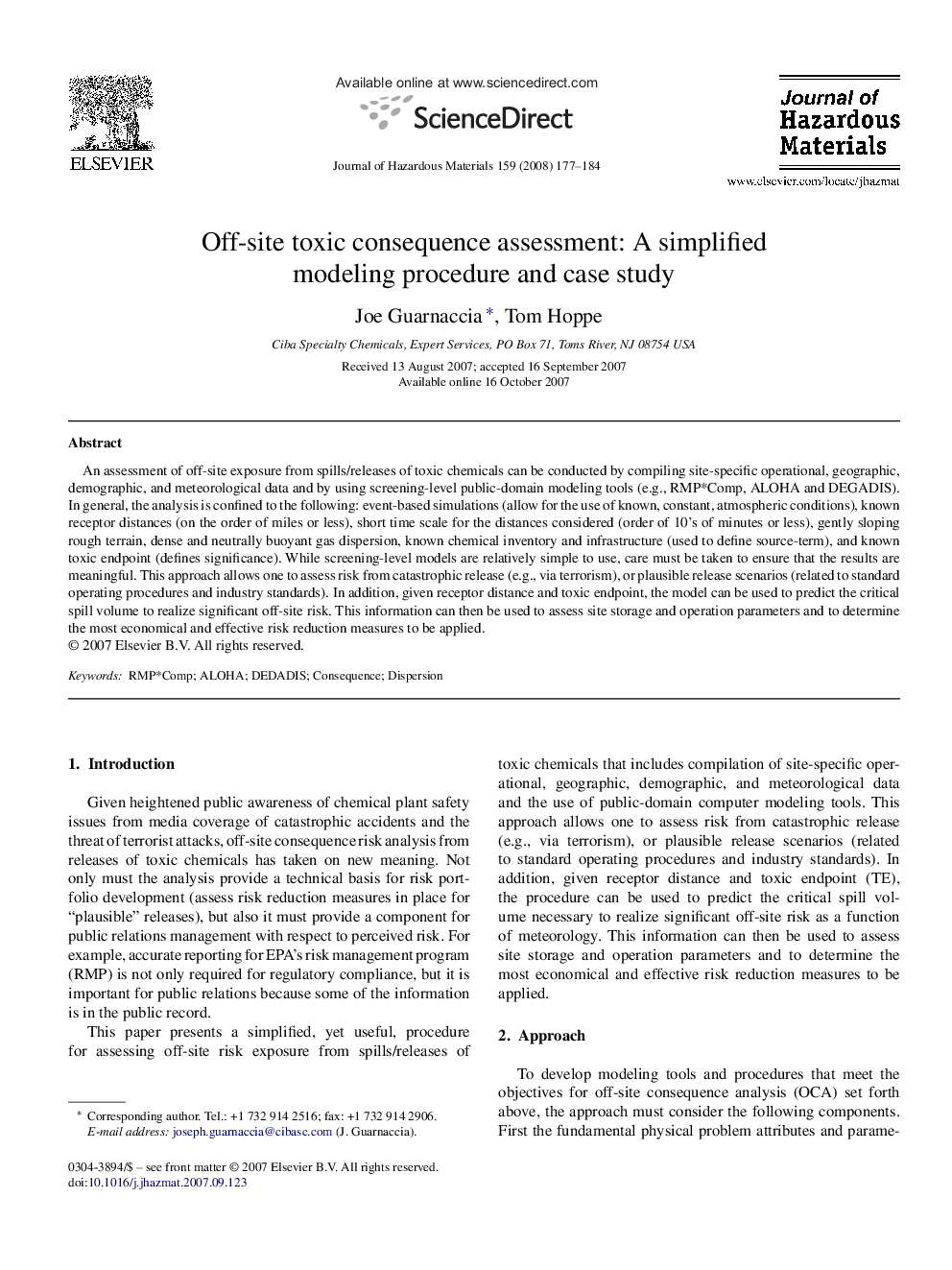| Article ID | Journal | Published Year | Pages | File Type |
|---|---|---|---|---|
| 582840 | Journal of Hazardous Materials | 2008 | 8 Pages |
Abstract
An assessment of off-site exposure from spills/releases of toxic chemicals can be conducted by compiling site-specific operational, geographic, demographic, and meteorological data and by using screening-level public-domain modeling tools (e.g., RMP*Comp, ALOHA and DEGADIS). In general, the analysis is confined to the following: event-based simulations (allow for the use of known, constant, atmospheric conditions), known receptor distances (on the order of miles or less), short time scale for the distances considered (order of 10's of minutes or less), gently sloping rough terrain, dense and neutrally buoyant gas dispersion, known chemical inventory and infrastructure (used to define source-term), and known toxic endpoint (defines significance). While screening-level models are relatively simple to use, care must be taken to ensure that the results are meaningful. This approach allows one to assess risk from catastrophic release (e.g., via terrorism), or plausible release scenarios (related to standard operating procedures and industry standards). In addition, given receptor distance and toxic endpoint, the model can be used to predict the critical spill volume to realize significant off-site risk. This information can then be used to assess site storage and operation parameters and to determine the most economical and effective risk reduction measures to be applied.
Keywords
Related Topics
Physical Sciences and Engineering
Chemical Engineering
Chemical Health and Safety
Authors
Joe Guarnaccia, Tom Hoppe,
